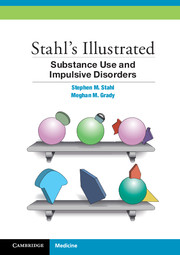Book contents
- Frontmatter
- Preface
- Contents
- CME Information
- Objectives
- Chapter 1 Substance Use and Addiction: An Overview
- Chapter 2 The Neurobiology of Reward and Drug Addiction
- Chapter 3 Alcohol
- Chapter 4 Opioids
- Chapter 5 Nicotine
- Chapter 6 Stimulants
- Chapter 7 Marijuana
- Chapter 8 Other Drugs of Abuse
- Chapter 9 Psychosocial Treatment for Substance Use Disorders
- Chapter 10 Disorders of Impulsivity and Compulsivity
- Summary
- Abbreviations
- References
- Index
- CME: Posttest and Certificate
Chapter 5 - Nicotine
Published online by Cambridge University Press: 05 February 2013
- Frontmatter
- Preface
- Contents
- CME Information
- Objectives
- Chapter 1 Substance Use and Addiction: An Overview
- Chapter 2 The Neurobiology of Reward and Drug Addiction
- Chapter 3 Alcohol
- Chapter 4 Opioids
- Chapter 5 Nicotine
- Chapter 6 Stimulants
- Chapter 7 Marijuana
- Chapter 8 Other Drugs of Abuse
- Chapter 9 Psychosocial Treatment for Substance Use Disorders
- Chapter 10 Disorders of Impulsivity and Compulsivity
- Summary
- Abbreviations
- References
- Index
- CME: Posttest and Certificate
Summary
Cigarette smoking is one of the leading causes of preventable death in the world. It is estimated that about 20% of the general population in the United States smoke. Rates are even higher in those with medical or psychiatric illnesses; 30% of individuals who regularly see a physician smoke, and 40–50% of those who see a mental health professional smoke. Yet only about 10% of smokers report being offered treatment proactively by clinicians.
This chapter reviews the neurobiological effects of nicotine as well as management strategies for patients addicted to nicotine, from screening and diagnosis to treatment selection and monitoring.
Nicotine directly causes dopamine release in the nucleus accumbens by binding to alpha 4 beta 2 nicotinic postsynaptic receptors on dopamine neurons in the VTA. In addition, nicotine binds to alpha 7 nicotinic presynaptic receptors on glutamate neurons in the VTA, which in turn leads to dopamine release in the nucleus accumbens. Nicotine also seems to desensitize alpha 4 beta 2 postsynaptic receptors on GABA interneurons in the VTA; the reduction of GABA neurotransmission disinhibits mesolimbic dopamine neurons and is thus a third mechanism for enhancing dopamine release in the nucleus accumbens.
(A) In the resting state, alpha 4 beta 2 nicotinic receptors are closed (left). Nicotine administration, as by smoking a cigarette, causes the receptor to open, which in turn leads to dopamine release (middle). Long-term stimulation of these receptors leads to their desensitization, such that they temporarily cannot react to nicotine (or to acetylcholine); this occurs in approximately the same amount of time it takes to finish a single cigarette (right).
(B) With chronic desensitization, alpha 4 beta 2 nicotinic receptors upregulate to compensate.
(C) If one continues smoking, however, the repeated administration of nicotine continues to lead to desensitization of all of these alpha 4 beta 2 receptors, and thus, the upregulation does no good. In fact, the upregulation can lead to amplified craving as the extra receptors resensitize to their resting state.
All patients should be asked about their tobacco use, and all patients who use tobacco should be advised to quit. This involves assessing each patient's readiness to quit, and, if they are ready to make a quit attempt, assisting them with counseling and pharmacotherapy as well as arranging follow-up support. These steps are called the 5 As (ask, advise, assess, assist, arrange).
- Type
- Chapter
- Information
- Publisher: Cambridge University PressPrint publication year: 2012



